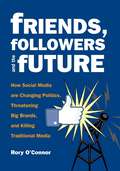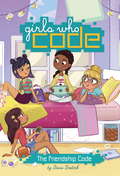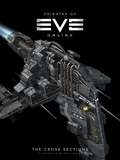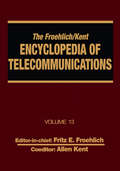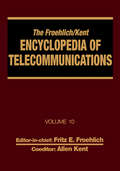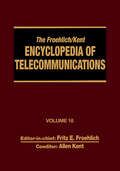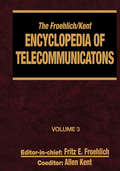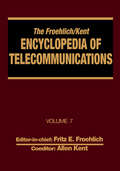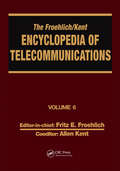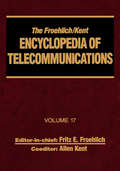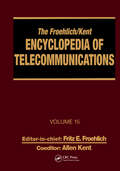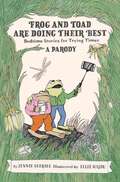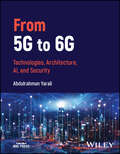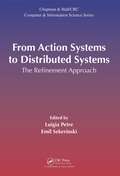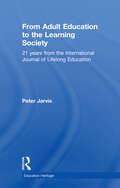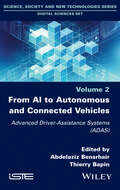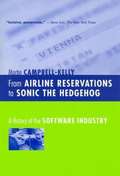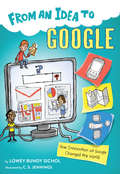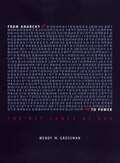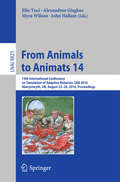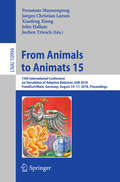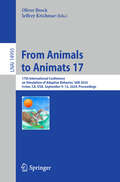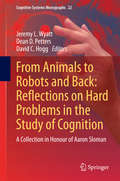- Table View
- List View
Friends, Followers and the Future
by Rory O'Connor"Rory O'Connor is one of the smartest media guys around. He knows who's spinning, who's pandering, and who's putting money in his own pocket at the expense of logic, reason, and the public good."-Michael Wolff, Vanity Fair media criticThere's a revolution going on, as ever-accelerating developments in digital information technologies change nearly every aspect of how we live, work, play, do business, and engage in politics. Share and share alike-the numbers say it all as billions of people worldwide flock to online media and use social networks to discover and spread news and information.In the process, ever-growing networks of "ordinary people" are using these powerful new tools to trim the influence long held by Big Business, Big Government, and Big Media. No longer just passive recipients, participants in social networks now regularly make and break news while organizing civic and political actions that bypass censors, outpace traditional media, attract massive audiences, and influence the rise and fall of brands, industries, politicians, and even governments.In this insider's look at how social media are transforming our world, Rory O'Connor explains the trends and explores what tech visionaries, media makers, political advisers, and businesspeople are saying about the meteoric rise of the various social networks of friends and followers, and what they bode for our future.Rory O'Connor, co-founder of MediaChannel.org, is the author of Shock Jocks: Hate Speech & Talk Radio. He has won two Emmys and a George Orwell Award, among many other honors.
Friends with Benefits: A Social Media Marketing Handbook
by Darren Barefoot Julie Szabo<P>The rules of marketing have changed. Savvy marketing professionals know that they must engage with individuals directly on the Web, and smart businesses know that customers can become friends—with benefits. Friends With Benefits shows you how to get into the online marketing game. A guide filled with tips, tricks, and real-world case studies, Friends With Benefits shows how you can increase your company's online visibility and Web traffic and win over online influencers. <P>Friends With Benefits explains how to: <br>–Connect with potential customers and join their conversations <br>–Tweak your website to support your social media marketing campaigns <br>–Promote your products or brand and manage the toughest negative online feedback <br>–Track marketing campaigns, monitor discussions, and measure success <P>With viral videos racking up millions of views and Twitter mavens influencing thousands of their friends, social media marketing is an essential new tool for every marketer's toolbox. The expert authors of Friend With Benefits guide you through the social media landscape, where authenticity and connections are more important than the size of your marketing budget, and real results can be just a few clicks away.
The Friendship Code (The Friendship Code #1)
by Stacia Deutsch Reshma Saujani<P>Perfect for fans of The Babysitters Club and anyone interested in computer science, this series is published in partnership with the organization Girls Who Code! <P>Loops, variables, input/output – Lucy can’t wait to get started with the new coding club at school. Finally, an after school activity that she’s really interested in. But Lucy’s excitement turns to disappointment when she’s put into a work group with girls she barely knows. All she wanted to do was make an app that she believes will help someone very special to her. <P> Suddenly, Lucy begins to get cryptic coding messages and needs some help translating them. She soon discovers that coding – and friendship – takes time, dedication, and some laughs! <P><b>A New York Times Bestseller</b>
The Frigates of EVE Online
by CcpThe universe of EVE Online is peopled with characters both cunning and cutthroat, but their talents would mean little without the impressive power of their starships to bring them to bear! Featuring brand new detailed images of twenty-eight of the most iconic ships in New Eden, this beautifully illustrated guide offers an unprecedented look into frigates from each faction with intricate cutaways and complex lore. Dark Horse Books is proud to partner with CCP Games to present The Frigates of EVE Online!
The Froehlich/Kent Encyclopedia of Telecommunications: Volume 13 - Network-Management Technologies to NYNEX
by Fritz E. Froehlich Allen KentThis article reviews network-management problems, technologies and standards, outlining the problems and challenges of the field. It overviews the functions and architectures, of various components of network-management systems (NMSs), describing key network-management application areas.
The Froehlich/Kent Encyclopedia of Telecommunications: Volume 10 - Introduction to Computer Networking to Methods for Usability Engineering in Equipment Design
by Fritz E. Froehlich Allen KentIntroduction to Computer Networking to Methods for Usability Engineering in Equipment Design.
The Froehlich/Kent Encyclopedia of Telecommunications: Volume 18 - Wireless Multiple Access Adaptive Communications Technique to Zworykin: Vladimir Kosma
by Fritz E. Froehlich Allen KentVolume 18- Wireless Multiple Access Adaptive Communications Technique to Zworykin, Vladimir Kosma. The only continuing source that helps users analyze, plan, design, evaluate, and manage integrated telecommunications networks, systems, and services, The Froehlich/Kent Encyclopedia of Telecommunications presents both basic and technologically advanced knowledge in the field. An ideal reference source for both newcomers as well as seasoned specialists, the Encyclopedia covers seven key areas--Terminals and Interfaces; Transmission; Switching, Routing, and Flow Control; Networks and Network Control; Communications Software and Protocols; Network and system Management; and Components and Processes.
The Froehlich/Kent Encyclopedia of Telecommunications: Volume 3 - Codes for the Prevention of Errors to Communications Frequency Standards
by Fritz E. Froehlich Allen Kent"The only continuing source that helps users analyze, plan, design, evaluate, and manage integrated telecommunications networks, systems, and services, The Froehlich/Kent Encyclopedia of Telecommunications presents both basic and technologically advanced knowledge in the field. An ideal reference source for both newcomers as well as seasoned specialists, the Encyclopedia covers seven key areas--Terminals and Interfaces; Transmission; Switching, Routing, and Flow Control; Networks and Network Control; Communications Software and Protocols; Network and system Management; and Components and Processes."
The Froehlich/Kent Encyclopedia of Telecommunications: Volume 7 - Electrical Filters: Fundamentals and System Applications to Federal Communications Commission of the United States
by Fritz E. Froehlich Allen Kent"The only continuing source that helps users analyze, plan, design, evaluate, and manage integrated telecommunications networks, systems, and services, The Froehlich/Kent Encyclopedia of Telecommunications presents both basic and technologically advanced knowledge in the field. An ideal reference source for both newcomers as well as seasoned specialists, the Encyclopedia covers seven key areas--Terminals and Interfaces; Transmission; Switching, Routing, and Flow Control; Networks and Network Control; Communications Software and Protocols; Network and system Management; and Components and Processes."
The Froehlich/Kent Encyclopedia of Telecommunications: Volume 6 - Digital Microwave Link Design to Electrical Filters
by Fritz E. Froehlich Allen Kent"The only continuing source that helps users analyze, plan, design, evaluate, and manage integrated telecommunications networks, systems, and services, The Froehlich/Kent Encyclopedia of Telecommunications presents both basic and technologically advanced knowledge in the field. An ideal reference source for both newcomers as well as seasoned specialists, the Encyclopedia covers seven key areas--Terminals and Interfaces; Transmission; Switching, Routing, and Flow Control; Networks and Network Control; Communications Software and Protocols; Network and system Management; and Components and Processes."
The Froehlich/Kent Encyclopedia of Telecommunications: Volume 17 - Television Technology
by Fritz E. Froehlich Allen KentVolume 17- Television Technology to Wire Antennas. The only continuing source that helps users analyze, plan, design, evaluate, and manage integrated telecommunications networks, systems, and services, The Froehlich/Kent Encyclopedia of Telecommunications presents both basic and technologically advanced knowledge in the field. An ideal reference source for both newcomers as well as seasoned specialists, the Encyclopedia covers seven key areas--Terminals and Interfaces; Transmission; Switching, Routing, and Flow Control; Networks and Network Control; Communications Software and Protocols; Network and system Management; and Components and Processes.
The Froehlich/Kent Encyclopedia of Telecommunications: Volume 15 - Radio Astronomy to Submarine Cable Systems
by Fritz E. Froehlich Allen KentThis is volume fifteen of the Encyclopedia of Telecommunications, which covers Radio Astronomy to Submarine Cable Systems in alphabetical listing and information on the contributors
Frog and Toad are Doing Their Best [A Parody]: Bedtime Stories for Trying Times
by Jennie EgerdieAt home, work, and out in our ever-changing world, we're all just doing our best. In this modern parody, Frog and Toad are here to commiserate and lend some laughter.Full of wry humor and deep compassion for our modern vulnerabilities, the stories in Frog and Toad Are Doing Their Best perfectly capture the heartwarming authenticity of Lobel&’s famous amphibian friends while revealing razor-sharp truths about the world we live in today. Through Frog and Toad, we see the anxieties that are woven throughout our everyday existence, from our well-meaning but often-failed attempts at practicing self-care to our struggle to balance the gifts and burdens of technology. Toad ponders a variety of questionable schemes to pay off his credit cards, while Frog spends too much time scrolling through the newsfeed on his phone. But despite their daily frustrations and existential concerns, they know that having a friend to share life&’s burdens makes even the darkest days brighter.
From 5G to 6G: Technologies, Architecture, AI, and Security
by Abdulrahman YaraliFrom 5G to 6G Understand the transition to the sixth generation of wireless with this bold introduction The transition from the fifth generation of wireless communication (5G) to the coming sixth generation (6G) promises to be one of the most significant phases in the history of telecommunications. The technological, social, and logistical challenges promise to be significant, and meeting these challenges will determine the future of wireless communication. Experts and professionals across dozens of fields and industries are beginning to reckon seriously with these challenges as the 6G revolution approaches. From 5G to 6G provides an overview of this transition, offering a snapshot of a moment in which 5G is establishing itself and 6G draws ever nearer. It focuses on recent advances in wireless technology that brings 6G closer to reality, as well as the near-term challenges that still have to be met for this transition to succeed. The result is an essential book for anyone wishing to understand the future of wireless telecommunications in an increasingly connected world. From 5G to 6G readers will also find: 6G applications to both AI and Machine Learning, technologies which loom ever larger in wireless communication Discussion of subjects including smart healthcare, cybersecurity, extended reality, and more Treatment of the ongoing infrastructural and technological requirements for 6G From 5G to 6G is essential for researchers and academics in wireless communication and computer science, as well as for undergraduates in related subjects and professionals in wireless-adjacent fields.
From Action Systems to Distributed Systems: The Refinement Approach
by Luigia Petre Emil SekerinskiFormal methods traditionally address the question of transforming software engineering into a mature engineering discipline. This essentially refers to trusting that the software-intensive systems that form our society's infrastructures are behaving according to their specifications. More recently, formal methods are also used to understand propert
From Adult Education to the Learning Society: 21 Years of the International Journal of Lifelong Education (Education Heritage)
by Peter JarvisThis unique text provides a valuable route map to the development of thinking in adult education and lifelong learning. It includes more than twenty-five seminal articles from the first two decades of the International Journal of Lifelong Education, written by leading authors in the field from the UK, the USA, Australia and Europe. Compiled to show the development of the field, the articles are divided into four sections: From Ault Education… …to Lifelong Education …and Lifelong Learning …to the Learning Society and Beyond. The specially written Introduction by the editor contextualises the selection and introduces readers to the main issues and current thinking in the field. This is the only text of its kind to demonstrate practice and policy internationally over this period, and as the collection of articles are now available in one easy-access place, this is an excellent resource for students and scholars.
From AI to Autonomous and Connected Vehicles: Advanced Driver-Assistance Systems (ADAS)
by Abdelaziz Bensrhair Thierry BapinThe main topic of this book is the recent development of on-board advanced driver-assistance systems (ADAS), which we can already tell will eventually contribute to the autonomous and connected vehicles of tomorrow.With the development of automated mobility, it becomes necessary to design a series of modules which, from the data produced by on-board or remote information sources, will enable the construction of a completely automated driving system. These modules are perception, decision and action. State-of-the-art AI techniques and their potential applications in the field of autonomous vehicles are described.Perception systems, focusing on visual sensors, the decision module and the prototyping, testing and evaluation of ADAS systems are all presented for effective implementation on autonomous and connected vehicles.This book also addresses cooperative systems, such as pedestrian detection, as well as the legal issues in the use of autonomous vehicles in open environments.
From Airline Reservations to Sonic the Hedgehog: A History of the Software Industry
by Martin Campbell-KellyFrom its first glimmerings in the 1950s, the software industry has evolved to become the fourth largest industrial sector of the US economy. Starting with a handful of software contractors who produced specialized programs for the few existing machines, the industry grew to include producers of corporate software packages and then makers of mass-market products and recreational software. This book tells the story of each of these types of firm, focusing on the products they developed, the business models they followed, and the markets they served. By describing the breadth of this industry, Martin Campbell-Kelly corrects the popular misconception that one firm is at the center of the software universe. He also tells the story of lucrative software products such as IBM's CICS and SAP's R/3, which, though little known to the general public, lie at the heart of today's information infrastructure. With its wealth of industry data and its thoughtful judgments, this book will become a starting point for all future investigations of this fundamental component of computer history.
From an Idea to Google: How Innovation at Google Changed the World (From an Idea to)
by Lowey Bundy SicholFrom an Idea to Google is a behind-the-computer-screen look into the history, business, and brand of the world's largest search engine. With humorous black & white illustrations throughout, learn about the company that even earned its own catchphrase: Google it!Today, Google is the number one internet search engine and the most visited website in the world. But a long time ago, two college friends, Larry Page and Sergey Brin, started out with just an idea. Find out more about Google’s history, the business, and the brand in this illustrated nonfiction book! Find out where the name “Google” came from. (Hint: It involves a LOT of zeros!) Discover how Google became the fastest and most popular internet search engine of all time. Explore how Google transformed from a tiny startup (in someone’s garage!) into one of the most powerful companies in the world.
From Anarchy to Power: The Net Comes of Age
by Wendy GrossmanYesterday's battles over internet turf were fought on the net itself: today's battles are fought in government committees, in Congress, on the stock exchange, and in the marketplace. What was once an experimental ground for electronic commerce is now the hottest part of our economic infrastructure. In From Anarchy to Power, Wendy Grossman explores the new dispensation on the net and tackles the questions that trouble every online user: How vulnerable are the internet and world wide web to malicious cyber hackers? What are the limits of privacy online? How real is internet addiction and to what extent is the news media responsible for this phenomenon? Are women and minorities at a disadvantage in cyberspace? How is the increasing power of big business changing internet culture? We learn about the political economy of the internet including issues of copyright law, corporate control and cryptography legislation. Throughout the book the emphasis is on the international dimensions of the net, focusing on privacy and censorship in the United States, Europe and Canada and the hitherto ignored contributions of other countries in the development of the net. Entertaining and informative From Anarchy to Power is required reading for anyone who wants to know where the new digital economy is heading.
From Animals to Animats 14
by John Hallam Myra Wilson Alexandros Giagkos Elio TuciThis book constitutes the proceedings of the 14th International Conference on Simulation of Adaptive Behavior, SAB 2016, held in Aberystwyth, UK, in August 2016. The 31 papers presented in this volume were carefully reviewed and selected from 45 submissions. They cover the main areas in animat research, including the animat approach and methodology, perception and motor control, learning and adaptation, evolution, and collective and social behavior.
From Animals to Animats 15: 15th International Conference on Simulation of Adaptive Behavior, SAB 2018, Frankfurt/Main, Germany, August 14-17, 2018, Proceedings (Lecture Notes in Computer Science #10994)
by Poramate Manoonpong Jørgen Christian Larsen Xiaofeng Xiong John Hallam Jochen TrieschThis book constitutes the refereed proceedings of the 15th International Conference on Simulation of Adaptive Behavior, SAB 2018, held in Frankfurt/Main, Germany, in August 2018.The 21 papers presented were carefully reviewed and selected from 39 submissions. They cover the main areas in animat research, including the animat approach and methodology, perception and motor control, action selection and navigation, learning and adaptation, and collective and social behavior.
From Animals to Animats 16: 16th International Conference on Simulation of Adaptive Behavior, SAB 2022, Cergy-Pontoise, France, September 20–23, 2022, Proceedings (Lecture Notes in Computer Science #13499)
by Lola Cañamero Philippe Gaussier Myra Wilson Sofiane Boucenna Nicolas CuperlierThis book constitutes the refereed proceedings of the 16th International Conference on Simulation of Adaptive Behavior, SAB 2022, held in Cergy-Pontoise, France, in September 2022.The 17 papers presented in this volume were carefully reviewed and selected from 23 submissions. They were organized in topical sections as follows: Embodiment; Brain-Inspired Control, Adaptation, and Learning; Bio-inspired Vision and navigation; Affective and Social Cognition and Collective Intelligence.
From Animals to Animats 17: 17th International Conference on Simulation of Adaptive Behavior, SAB 2024, Irvine, CA, USA, September 9–12, 2024, Proceedings (Lecture Notes in Computer Science #14993)
by Oliver Brock Jeffrey KrichmarThis book constitutes the refereed proceedings of the 17th International Conference on Simulation of Adaptive Behavior, SAB 2024, held in Irvine, CA, USA, during September 9–12, 2024. The 26 full papers included in this book were carefully reviewed and selected from 30 submissions. They were organized in topical sections as follows: Bio-Inspired Navigation; Biomimetic Robots; Collective Behavior; Evolutionary Approaches to Adaptive Behavior; Motor Learning and Problem Solving and Decision-Making.
From Animals to Robots and Back: Reflections on Hard Problems in the Study of Cognition
by Jeremy L. Wyatt Dean D. Petters David C. HoggCognitive Science is a discipline that brings together research in natural and artificial systems and this is clearly reflected in the diverse contributions to From Animals to Robots and Back. In tribute to Aaron Sloman and his pioneering work in Cognitive Science and Artificial Intelligence, the editors have collected a unique collection of cross-disciplinary papers that include work on: · intelligent robotics; · philosophy of cognitive science; · emotional research · computational vision; · comparative psychology; and · human-computer interaction. Key themes such as the importance of taking an architectural view in approaching cognition, run through the text. Drawing on the expertize of leading international researchers, contemporary debates in the study of natural and artificial cognition are addressed from complementary and contrasting perspectives with key issues being outlined at various levels of abstraction. From Animals to Robots and Back, will give readers with backgrounds in the study of both natural and artificial cognition an important window on the state of the art in cognitive systems research.
